#Asian American and Pacific Islander community
Explore tagged Tumblr posts
Text
youtube
#youtube#news#Asian Pacific American Institute for Congressional Studies#advocacy for AAPI community#APAICS Summit#Kamala Harris#Asian American and Pacific Islander community#Asian Americans and Pacific Islanders#minority representation#Vice President Kamala Harris#diversity in politics#Vice President Harris#Asian American issues#Vice President of the United States#importance of diversity#Asian American history#Asian American representation#diversity and inclusion#AAPI#Q&A
0 notes
Text
Happy Asian American Pacific Islander Heritage Month!! Here are some AAPI book 📚 recs!! :3
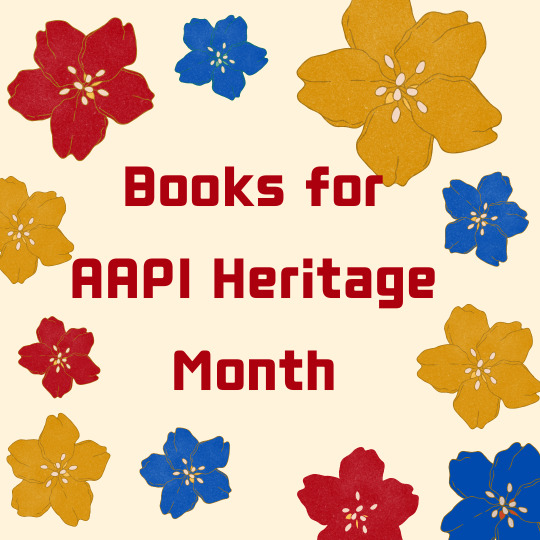
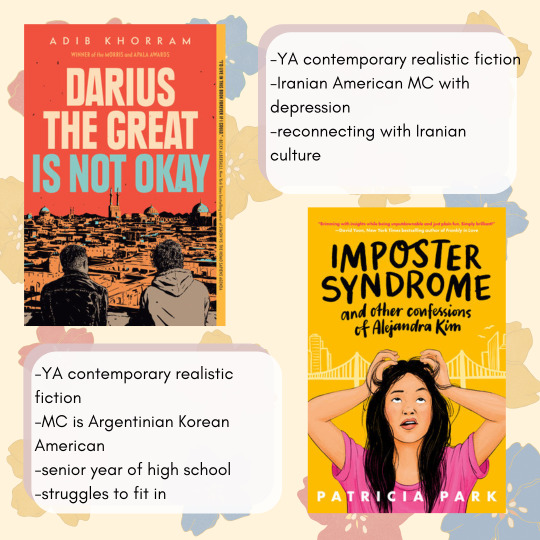
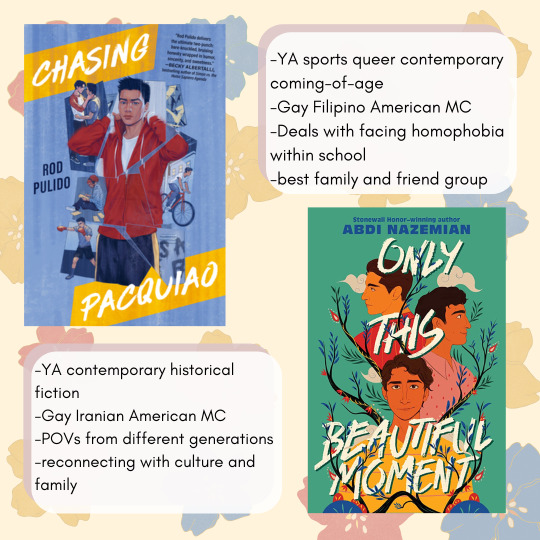
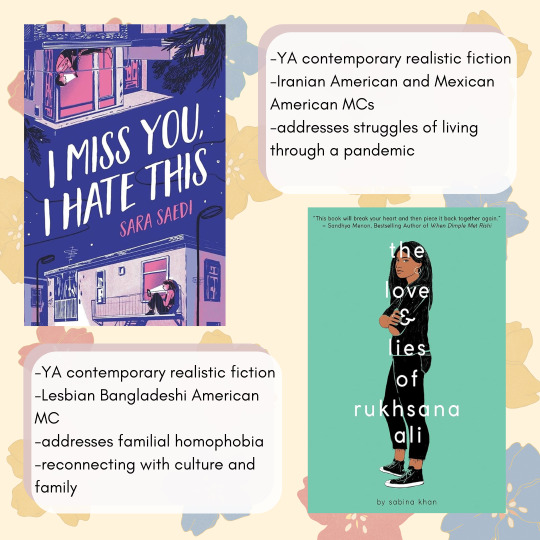
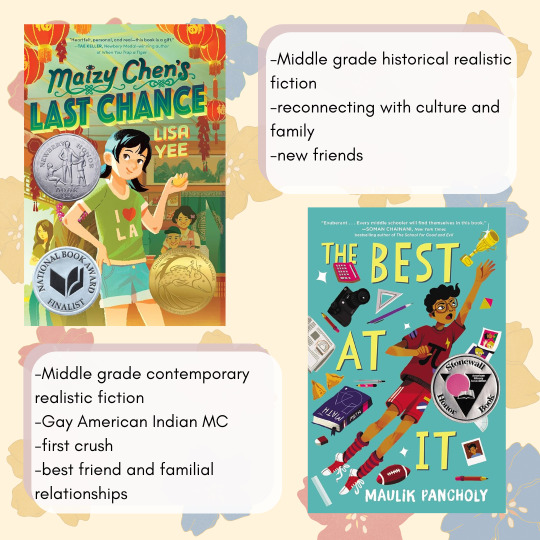
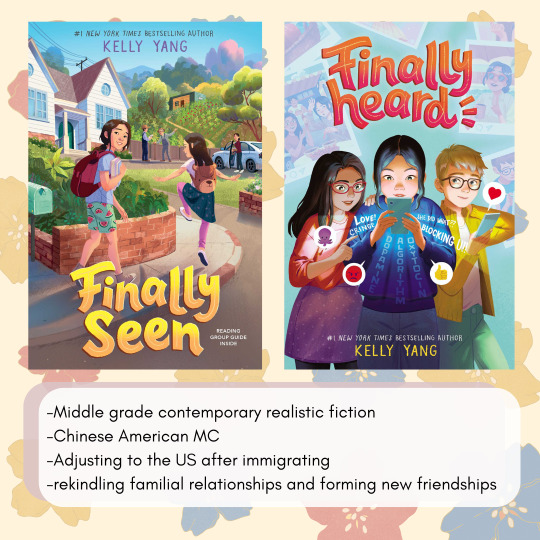

#lgbt pride#lgbt representation#lgbtqa#queer books#queer community#lgbt books#queer writers#queerrep#bookworm#queer aapi books#aapi queer books#aapi books#aapi representation#aapi heritage month#aapi month#asian american#asian american pacific islander heritage month#asian american pacific islander rep#filipino american
23 notes
·
View notes
Text
Queer people of color who need support reblog this with your paypal/chashapp/venmo/etsy/kofi/etc. And I'll add them into a list/rb this post with it.
White gays and allies who can please put your money where your mouth is and show some support for queer people of color who may be facing homelessness or starvation kr sny other number of things that need a few more dollars that direction.
Please try and reblog if you can't donate and spread this post.
I'll go first, and this list will be updated with new additions. Once it has more I will link it in my pinned for continued visibility.
Hello, Disabled Nonbinary Butch Lesbian here. Rent went up and our foodstamps are not cooperating so we are really tight on food. If you have it, even small ammounts help. Mines a chashapp.
#poc#black#asian#indigenous#aboriginal#latino#arab#puerto rican#african american#pacific islander#lgbtqia#lgbtq#lgbtqiia+#queer#queer poc#queer community#transgender#nonbinary#intersex#lesbian#gay#asexual#aromantic#bisexual#donations tag#donations#g speaks
7 notes
·
View notes
Photo
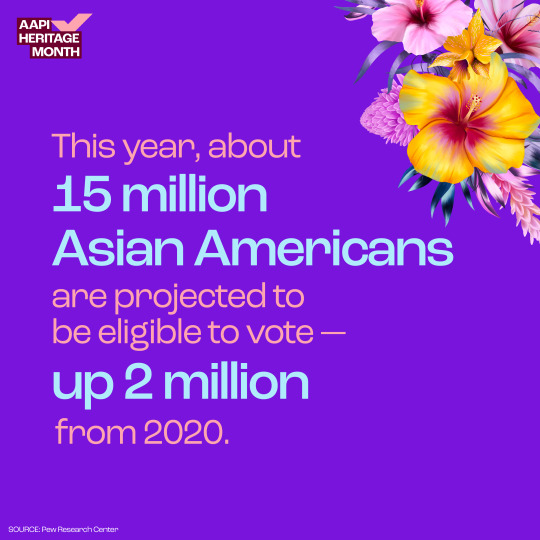
With roots in more than 20 countries, Asian Americans and Pacific Islanders are an incredibly diverse population.
They’re also the fastest growing voting bloc in the United States. 📈
Celebrate the rise of AAPI voting power with us by making sure you are registered to vote at weall.vote/register.
#aapiheritagemonth#aapi heritage month#AAPI community#AAPI#AANHPI#asian americans#pacific islanders#voter#voting#vote
8 notes
·
View notes
Text
New College and Ringling partner for AAPI month activities
New College of Florida’s Asian Pacific Islander Student Association (APISA) and Ringling College of Art and Design’s (RCAD) Asian Student Association (ASA) are two recently founded affinity groups at schools just a stone’s throw from each other. As Asian American and Pacific Islander (AAPI) Month approaches, the two groups decided to spend a weekend celebrating their cultures through a visit to…

View On WordPress
#apisa#asian american pacific islander heritage month#community#culture#new college culture#ringling college of art and design
1 note
·
View note
Text

Meet the Artist: @nyangjinart
Hi everyone! My name is Jin (she/her) and I'm a Korean American artist from NYC. I love drawing magical retro aesthetic art and cute animals that are colorful and vibrant. Art has been my comfort zone and passion for as long as I can remember, so I hope that my art can give that sense of comfort and nostalgia for others! I would have never thought my art journey would bring me to such a community of vast people who also love what I love, so I hope that I can make more connections!
Nice to meet you, Jin! Below are some pieces she has picked out for you all.
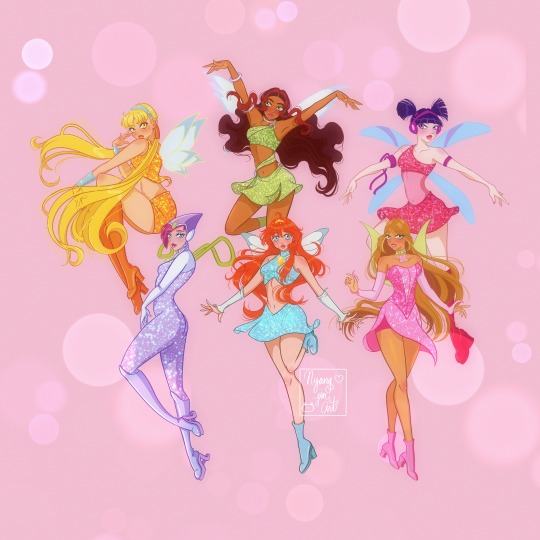


Check out more of Jin's work over at her Tumblr, @nyangjinart!
-
We are highlighting some of Tumblr’s talented artists of Asian descent all month as part of Asian American and Pacific Islander Heritage Month!
#meet the artist#meet the artist on tumblr#artists on tumblr#art#winx club#sailor moon#tokyo mew mew#nyangjinart#asian artists#aapi month#apahm
1K notes
·
View notes
Link
#Federal Government#and Opportunity for Asian American#and Pacific Islander Communities#Asian Americans#Contextomy#Equity#Joe Biden#Justice#Kamala Harris#National Strategy to Advance Equity#Native Hawaiian#Opportunity#Pacific Islanders#The White House
0 notes
Text
fuck your pride activism if it only includes cis, white able-bodied and neurotypical queers
fuck your pride activism if you forgot why we celebrate this month and who started it (black and trans working class ppl if you needed a reminder)
fuck your pride activism if you pretend to care about the community but then continue to buy from big companies that donate millions to anti lgbt politicians, perpetuate genocide, exploit other human beings and destroy the environment (but put a rainbow on their logo each june so it's ok)
fuck your pride activism if it continues to support israel and still falls for its pinkwashing and racist bullshit (about it being the only progressive country in the middle east etc)
fuck your pride activism if you exclude palestinian, congolese, sudanese, uyghur, armenian, (and every community suffering from genocide) lgbtq people from your cry for freedom
fuck your pride activism if it doesn't support the liberation of south and central american, caribbean, asian, romani, eastern european, sámi, middle eastern, native american, pacific islander, maori, aboriginal australian, indigenous tribes everywhere, and african people.
fuck your pride activism if you don't support religious queer people and reject their spirituality and connection to their faith as part of their identity
fuck your pride activism if you don't welcome queer inmigrants, war refugees and political refugees
fuck your pride activism if you don't uplift the voices of those who can't, those who are silenced, those who have to hide, those who fear imprisonment or death for being who they are
fuck state homophobia and opressive regimes
fuck homonationalism and the hypocrisy of the west
fuck capitalist and colonial pride
pride is for every single one of us
pride was a riot before it was a celebration and i intend to protest for an intersectional activism each and every day of this month
#i'm so done#no pride in genocide#happy pride 🌈#pride month#queer pride#lgbtq#lgbtq community#lgbt pride#lgbtqia#queer#queer community#pride#pride 2024#happy pride month#queer activism#lgbt activism#collective liberation#none of us are free until all of us are free#none of us is free until we all are#freedom#free palestine#free congo#free sudan#free artsakh#free syria#refugees#inmigrantes#free gaza#immigrants#human rights
337 notes
·
View notes
Text
happy APIDA Heritage Month aka Asian Pacific Islander Desi American Heritage Month to my asian selfshippers, my asian american selfshippers, my pacific peoples who selfship, my desi selfshippers, my native hawaiian selfshippers and everyone else who falls under this umbrella! lots of love and joy to you all this month, your f/os would be happy to learn about your culture and can’t wait to spend lots of time with you!
let’s remember to uplift people of color when it matters most and just because the name APIDA groups them together does not mean they all share the same cultures or experiences, it makes the community not only open for everyone but safe as well to remember this and to support these groups in not only this month but every month. 💗
#poc selfship#poc selfshippers#apida heritage month#selfship community#selfship#f/o community#i hadnt seen any post abt this so i took the initiative esp cause i did see for b.pd awareness month but not this#aapi month#apida month
174 notes
·
View notes
Text
@anneemay just filched these references from the south asian guest workers article im reading, since you were interested in the middle east labor economies
Fred Arnold and Nasra M. Shah, “Asian Labor Migration to the Middle East,” International Migration Review 18 (1984): 294–318;
Urmil Minocha, “South Asian Immigrants: Trends and Impacts on the Sending and Receiving Societies,” in Pacific Bridges: The New Immigration from Asia and the Pacific Islands, edited by James T. Fawcett (New York: John Wiley, 1987), 347–73;
Frank Eelens and J. D. Speckman, “Recruitment of Labor Migrants to the Middle East: The Sri Lankan Case,” International Migration Review 24, no. 2 (Summer 1990): 297–322;
Kale, Fragments of Empire; Dovelyn Rannveig Agunias, “From a Zero-Sum to a Win-Win Scenario? Literature Review on Circular Migration” (Washington, D.C.: Migration Policy Institute, Program on Migrants, Migration, and Development, September 2006);
Andrew Gardner, City of Strangers: Gulf Migration and the Indian Community in Bahrain (Ithaca, N.Y.: Cornell University Press, 2010);
Jane Bristol-Rhys, “Socio-spatial Boundaries in Abu Dhabi,” in Migrant Labor in the Persian Gulf, ed. Mehran Kamrava (New York: Columbia University Press, 2012), 59–84;
Michelle Buckley, “On the Work of Urbanization: Migration, Construction Labor, and the Commodity Moment,” Annals of the Association of American Geographers 104, no. 2 (2014):
J. S. Birks and C. A. Sinclair, “The International Migration Project: An Enquiry into the Middle East Labor Market,” International Migration Review 13, no. 1 (1997): 122–35; Minocha, “South Asian Immigrants.”
Arnold and Shah, “Asian Labor Migration to the Middle East.”
47 notes
·
View notes
Text
youtube
#youtube#usmilitary#Asian American#Native Hawaiian#Pacific Islander Heritage Month 2024#AANHPI Heritage Month Celebration#History#Community#AANHPI#United States#Awareness#Unity#Education#Empowerment#Pacific Islander#Identity#Heritage Month#Multicultural#Diversity#Representation#Culture#Celebrate#Equality#Traditions#Inclusion#Solidarity#Activism#Events#AAPI
2 notes
·
View notes
Note
I hate it when I can't use a term that fits me very well because my brain (which processes everything with images) has an image of that term that doesn't look like me.
Like when I think of "transmasc" and all that pops into my head are skinny, white, American boys with very basic styles (which isn't a bad thing, it's just "too basic" for me personally), and of course, who look like cis boys and hate their bodies or prefer other body.
Meanwhile, I'm a POC, fat, Latine person, with questionable style (/joke), who CERTAINLY doesn't look like a cis boy and who really loves their body.
How could I use a term when my brain tells me that term doesn't fit people like me? I hate that. It's just me?
hey anon. i so wish I could reach through this screen and tell you that who you are is perfect and that you have every right to terminology that feels right, but as a fat trans person myself I know it takes more than kind words to deal with a pain like this, and one that’s even more intersectional than mine with your race and culture in the picture.
but that image you have in your head of what transmasc means, that is not the reality. that is what a small part of the community, of the world, WANTS you to think because they would rather throw other members of their community under the bus to gain faux acceptance for themselves, which is NOT your fault, but it’s also not everyone, there are so many people in this community who look like you or who truly stand with you. Transmasculine history is and never has been white or thin or any of that.
I’m going to link a few things you may want to look into if you’re wanting to start accepting your identity a little more, or just to see that you really ARENT alone. trans men/transmascs of color have been part of our history since the beginning. some of these things im sharing may be somewhat nsfw and have the word 'tranny' in them, just as a warning if that stuff bothers you.
newspaper clipping showing three trans men of color at a festival for a film they were part of, the first ever sexual/porn film by and for trans men of color
some pictures showing some fat trans men and trans men of color at marches are here
Bobby Cheung, the Asian and Pacific Islander trans man who won the Mr. Transgender San Francisco Pageant in 2004
trans men of color discuss intersectionality in a film they directed called "Trappings Of Transhood"
a photo showing the attendees of an FTM conference- you can see many non-white people in attendance
a photo of a group of Latino trans men who attended Tranny Fest in 1999
basic info on victor j mukasa, a Black transmasc lesbian active in East African LGBTQ rights scene
an older fat trans gentleman's photo and experience
a post on pauli murray (please look them up. his experience is much more nuanced than this post gives them credit for, and she was a wonderful intersectional activist)
various trans men (many fat and of color) who have contributed to our history
a conference of Indian trans men
the story of a trans man named Ben
one of my personal favorite transmasc historical figures, Amelio Robles Ávila
Zander Keig, the fat Latino trans man who won social worker of the year in 2020
a wonderful read on the intersectionality of transmasculinity and race
a digital archive of trans and queer Latino history
the Instagram page of a popular Black drag king
an article with interviews with various drag kings, including several of color
Florence Hines, the Black drag king once called the most excellent male impersonator in America
more drag kings many of color!
Drag Kings: An Archaeology of Spectacular Masculinities in Latino America
anon, it is so easy to feel like you are alone when your own history has been unfairly erased from you. but when I say “you are not alone”, I am not offering empty words of comfort- YOU ARE NOT ALONE. Transmasc and similar identity has truly NEVER actually been just for white people or thin people. You are WONDERFUL, and you are ABSOLUTELY a part of trans masculinity and transmasculine history is YOUR history and community as much as it is mine and others. You belong.
321 notes
·
View notes
Text
Where It’s Most Dangerous to Be Black in America

Black Americans made up 13.6% of the US population in 2022 and 54.1% of the victims of murder and non-negligent manslaughter, aka homicide. That works out, according to Centers for Disease Control and Prevention data, to a homicide rate of 29.8 per 100,000 Black Americans and four per 100,000 of everybody else.(1)
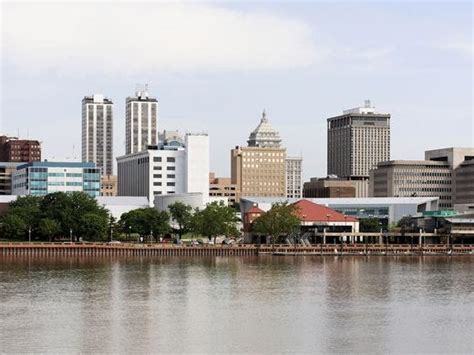
A homicide rate of four per 100,000 is still quite high by wealthy-nation standards. The most up-to-date statistics available from the Organization for Economic Cooperation and Development show a homicide of rate one per 100,000 in Canada as of 2019, 0.8 in Australia (2021), 0.4 in France (2017) and Germany (2020), 0.3 in the UK (2020) and 0.2 in Japan (2020).
But 29.8 per 100,000 is appalling, similar to or higher than the homicide rates of notoriously dangerous Brazil, Colombia and Mexico. It also represents a sharp increase from the early and mid-2010s, when the Black homicide rate in the US hit new (post-1968) lows and so did the gap between it and the rate for everybody else. When the homicide rate goes up, Black Americans suffer disproportionately. When it falls, as it did last year and appears to be doing again this year, it is mostly Black lives that are saved.
As hinted in the chart, racial definitions have changed a bit lately; the US Census Bureau and other government statistics agencies have become more open to classifying Americans as multiracial. The statistics cited in the first paragraph of this column are for those counted as Black or African American only. An additional 1.4% of the US population was Black and one or more other race in 2022, according to the Census Bureau, but the CDC Wonder (for “Wide-ranging Online Data for Epidemiologic Research”) databases from which most of the statistics in this column are drawn don’t provide population estimates or calculate mortality rates for this group. My estimate is that its homicide rate in 2022 was about six per 100,000.
A more detailed breakdown by race, ethnicity and gender reveals that Asian Americans had by far the lowest homicide rate in 2022, 1.6, which didn’t rise during the pandemic, that Hispanic Americans had similar homicide rates to the nation as a whole and that men were more than four times likelier than women to die by homicide in 2022. The biggest standout remained the homicide rate for Black Americans.

Black people are also more likely to be victims of other violent crime, although the differential is smaller than with homicides. In the 2021 National Crime Victimization Survey from the Bureau of Justice Statistics (the 2022 edition will be out soon), the rate of violent crime victimization was 18.5 per 1,000 Black Americans, 16.1 for Whites, 15.9 for Hispanics and 9.9 for Asians, Native Hawaiians and other Pacific Islanders. Understandably, Black Americans are more concerned about crime than others, with 81% telling Pew Research Center pollsters before the 2022 midterm elections that violent crime was a “very important” issue, compared with 65% of Hispanics and 56% of Whites.
These disparities mainly involve communities caught in cycles of violence, not external predators. Of the killers of Black Americans in 2020 whose race was known, 89.4% were Black, according to the FBI. That doesn’t make those deaths any less of a tragedy or public health emergency. Homicide is seventh on the CDC’s list of the 15 leading causes of death among Black Americans, while for other Americans it’s nowhere near the top 15. For Black men ages 15 to 39, the highest-risk group, it’s usually No. 1, although in 2022 the rise in accidental drug overdoses appears to have pushed accidents just past it. For other young men, it’s a distant third behind accidents and suicides.
To be clear, I do not have a solution for this awful problem, or even much of an explanation. But the CDC statistics make clear that sky-high Black homicide rates are not inevitable. They were much lower just a few years ago, for one thing, and they’re far lower in some parts of the US than in others. Here are the overall 2022 homicide rates for the country’s 30 most populous metropolitan areas.
Metropolitan areas are agglomerations of counties by which economic and demographic data are frequently reported, but seldom crime statistics because the patchwork of different law enforcement agencies in each metro area makes it so hard. Even the CDC, which gets its mortality data from state health departments, doesn’t make it easy, which is why I stopped at 30 metro areas.(2)
Sorting the data this way does obscure one key fact about homicide rates: They tend to be much higher in the main city of a metro area than in the surrounding suburbs.
But looking at homicides by metro area allows for more informative comparisons across regions than city crime statistics do, given that cities vary in how much territory they cover and how well they reflect an area’s demographic makeup. Because the CDC suppresses mortality data for privacy reasons whenever there are fewer than 10 deaths to report, large metro areas are good vehicles for looking at racial disparities. Here are the 30 largest metro areas, ranked by the gap between the homicide rates for Black residents and for everybody else.
The biggest gap by far is in metropolitan St. Louis, which also has the highest overall homicide rate. The smallest gaps are in metropolitan San Diego, New York and Boston, which have the lowest homicide rates. Homicide rates are higher for everybody in metro St. Louis than in metro New York, but for Black residents they’re six times higher while for everyone else they’re just less than twice as high.
There do seem to be some regional patterns to this mayhem. The metro areas with the biggest racial gaps are (with the glaring exception of Portland, Oregon) mostly in the Rust Belt, those with the smallest are mostly (with the glaring exceptions of Boston and New York) in the Sun Belt. Look at a map of Black homicide rates by state, and the highest are clustered along the Mississippi River and its major tributaries. Southern states outside of that zone and Western states occupy roughly the same middle ground, while the Northeast and a few middle-of-the-country states with small Black populations are the safest for their Black inhabitants.(3)
Metropolitan areas in the Rust Belt and parts of the South stand out for the isolation of their Black residents, according to a 2021 study of Census data from Brown University’s Diversity and Disparities Project, with the average Black person living in a neighborhood that is 60% or more Black in the Detroit; Jackson, Mississippi; Memphis; Chicago; Cleveland and Milwaukee metro areas in 2020 (in metro St. Louis the percentage was 57.6%). Then again, metro New York and Boston score near the top on another of the project’s measures of residential segregation, which tracks the percentage of a minority group’s members who live in neighborhoods where they are over-concentrated compared with White residents, so segregation clearly doesn’t explain everything.
Looking at changes over time in homicide rates may explain more. Here’s the long view for Black residents of the three biggest metro areas. Again, racial definitions have changed recently. This time I’ve used the new, narrower definition of Black or African American for 2018 onward, and given estimates in a footnote of how much it biases the rates upward compared with the old definition.
All three metro areas had very high Black homicide rates in the 1970s and 1980s, and all three experienced big declines in the 1990s and 2000s. But metro Chicago’s stayed relatively high in the early 2010s then began a rebound in mid-decade that as of 2021 had brought the homicide rate for its Black residents to a record high, even factoring in the boost to the rate from the definitional change.
What happened in Chicago? One answer may lie in the growing body of research documenting what some have called the “Ferguson effect,” in which incidents of police violence that go viral and beget widespread protests are followed by local increases in violent crime, most likely because police pull back on enforcement. Ferguson is the St. Louis suburb where a 2014 killing by police that local prosecutors and the US Justice Department later deemed to have been in self-defense led to widespread protests that were followed by big increases in St. Louis-area homicide rates. Baltimore had a similar viral death in police custody and homicide-rate increase in 2015. In Chicago, it was the October 2014 shooting death of a teenager, and more specifically the release a year later of a video that contradicted police accounts of the incident, leading eventually to the conviction of a police officer for second-degree murder.

It’s not that police killings themselves are a leading cause of death among Black Americans. The Mapping Police Violence database lists 285 killings of Black victims by police in 2022, and the CDC reports 209 Black victims of “legal intervention,” compared with 13,435 Black homicide victims. And while Black Americans are killed by police at a higher rate relative to population than White Americans, this disparity — 2.9 to 1 since 2013, according to Mapping Police Violence — is much less than the 7.5-to-1 ratio for homicides overall in 2022. It’s the loss of trust between law enforcement agencies and the communities they serve that seems to be disproportionately deadly for Black residents of those communities.
The May 2020 murder of George Floyd by a Minneapolis police officer was the most viral such incident yet, leading to protests nationwide and even abroad, as well as an abortive local attempt to disband and replace the police department. The Minneapolis area subsequently experienced large increases in homicides and especially homicides of Black residents. But nine other large metro areas experienced even bigger increases in the Black homicide rate from 2019 to 2022.
A lot of other things happened between 2019 and 2022 besides the Floyd protests, of course, and I certainly wouldn’t ascribe all or most of the pandemic homicide-rate increase to the Ferguson effect. It is interesting, though, that the St. Louis area experienced one of the smallest percentage increases in the Black homicide rate during this period, and it decreased in metro Baltimore.
Also interesting is that the metro areas experiencing the biggest percentage increases in Black residents’ homicide rates were all in the West (if your definition of West is expansive enough to include San Antonio). If this were confined to affluent areas such as Portland, Seattle, San Diego and San Francisco, I could probably spin a plausible-sounding story about it being linked to especially stringent pandemic policies and high work-from-home rates, but that doesn’t fit Phoenix, San Antonio or Las Vegas, so I think I should just admit that I’m stumped.
The standout in a bad way has been the Portland area, which had some of the longest-running and most contentious protests over policing, along with many other sources of dysfunction. The area’s homicide rate for Black residents has more than tripled since 2019 and is now second highest among the 30 biggest metro areas after St. Louis. Again, I don’t have any real solutions to offer here, but whatever the Portland area has been doing since 2019 isn’t working.
(1) The CDC data for 2022 are provisional, with a few revisions still being made in the causes assigned to deaths (was it a homicide or an accident, for example), but I’ve been watching for weeks now, and the changes have been minimal. The CDC is still using 2021 population numbers to calculate 2022 mortality rates, and when it updates those, the homicide rates will change again, but again only slightly. The metropolitan-area numbers also don’t reflect a recent update by the White House Office of Management and Budget to its list of metro areas and the counties that belong to them, which when incorporated will bring yet more small mortality-rate changes. To get these statistics from the CDC mortality databases, I clicked on “Injury Intent and Mechanism” and then on “Homicide”; in some past columns I instead chose “ICD-10 Codes” and then “Assault,” which delivered slightly different numbers.
(2) It’s easy to download mortality statistics by metro area for the years 1999 to 2016, but the databases covering earlier and later years do not offer this option, and one instead has to select all the counties in a metro area to get area-wide statistics, which takes a while.
(3) The map covers the years 2018-2022 to maximize the number of states for which CDC Wonder will cough up data, although as you can see it wouldn’t divulge any numbers for Idaho, Maine, Vermont and Wyoming (meaning there were fewer than 10 homicides of Black residents in each state over that period) and given the small numbers involved, I wouldn’t put a whole lot of stock in the rates for the Dakotas, Hawaii, Maine and Montana.
(https://www.washingtonpost.com/business/2023/09/14/where-it-s-most-dangerous-to-be-black-in-america/cdea7922-52f0-11ee-accf-88c266213aac_story.html)
139 notes
·
View notes
Photo

On average, Asian American, Native Hawaiian, and Pacific Islander women working in the U.S. only earn 80 cents for every $1 a white, non-Hispanic man makes — and for specific communities, the wage gap is far greater. Bangladeshi, Nepalese, and Burmese women are some of the lowest paid women in the country.
Equal work should mean equal pay. Period. 🪙 ≠ 💵
The politicians WE elect can implement reforms that address pay inequality. Register to vote now at weall.vote/register.
182 notes
·
View notes
Text
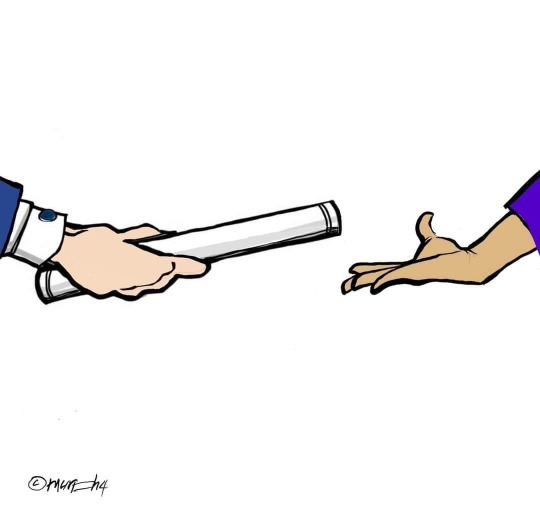
LETTERS FROM AN AMERICAN
July 22, 2024
HEATHER COX RICHARDSON
JUL 23, 2024
Vice President Kamala Harris has continued to rack up endorsements and delegates since President Biden’s surprise announcement yesterday that he would not accept the 2024 Democratic presidential nomination. As of tonight, Harris has the support of at least 2,471 delegates, more than the 1,976 she will need to secure the nomination.
Endorsements have also continued to mount, with the Congressional Black Caucus, the Congressional Hispanic Caucus, the Congressional Progressive Caucus, the AAPI (Asian American and Pacific Islander) Victory Fund, and the Latino Victory Fund all endorsing her.
Labor unions have also backed her: the AFL-CIO, which represents 12.5 million workers, endorsed Harris. So did the Service Employees International Union, with 2 million workers, as well as the United Steelworkers, which represents 850,000 metal workers and miners, and the Communications Workers of America. Other unions endorsing Harris include the American Federation of Teachers, the United Food and Commercial Workers, the International Brotherhood of Electrical Workers, and the American Federation of State, County and Municipal Employees.
Money continues to roll in. Since Biden’s announcement, Harris and the Democrats have raised about $250 million in donations and pledges. More than 888,000 were from small-dollar donors. Volunteers are also joining the Harris campaign, which said that more than 28,000 people have signed up to work on the campaign in the day since Biden passed the torch. Today, Beyoncé gave Harris permission to use her song “Freedom” as a campaign song, and TikTok users have jumped on the Harris trend.
Harris is keeping some of the key infrastructure of Biden’s campaign. She has announced that Biden campaign manager Julie Chávez-Rodriguez and Biden campaign chair Jen O’Malley Dillon will remain in their positions. Michigan governor Gretchen Whitmer announced today that she, too, will stay on as co-chair for Harris’s campaign as she was for Biden’s.
Harris spoke today at campaign headquarters in Wilmington, Delaware, smoothing the transition from Biden’s campaign to her own. “I know it’s been a rollercoaster and we’re all filled with so many mixed emotions about this,” Harris said. “We love Joe and Jill. We really do. They truly are like family.” Biden called in to the meeting from Delaware, where he is isolating as he recovers from Covid, to thank the staff. “I know it’s hard, because you’ve poured your heart and soul into me, to help us win this thing,” Biden told them, but added: “The name changed at the top of the ticket. The mission hasn’t changed at all.” Biden told Harris: “I’m watching you kid, I love you. You’re the best, kid.”
Harris went on to indicate that she will be taking the fight for the presidency aggressively to Trump, highlighting his criminal behavior. “Before I was elected as Vice President, before I was elected as United States Senator,” she said today, “I was the elected Attorney General, as I've mentioned, to California, and before that, I was a courtroom prosecutor. In those roles I took on perpetrators of all kinds. Predators who abused women. Fraudsters who ripped off consumers. Cheaters who broke the rules for their own gain. So hear me when I say I know Donald Trump's type.”
She was clear, though, that the fight is not just about Trump; it is about “two different versions of what we see as the future of our country…. Donald Trump wants to take our country backward. To a time before many of our fellow Americans had full freedoms and rights. But we believe in a brighter future that makes room for all Americans.” She promised to continue the work of building the middle class, protect abortion rights, enact commonsense gun safety legislation, and protect voting rights. She contrasted the Democrats’ vision of “a country of freedom, compassion, and rule of law” with the Republicans’: “a country of chaos, fear, and hate.”
Biden’s announcement and Harris’s rapid consolidation of support and money appear to have blindsided the Trump-Vance campaign. MAGA Republicans have responded with scattershot arguments that suggest they had not thought through a scenario in which Biden would step down, an omission so astonishing it perhaps suggests they could not imagine a presumptive nominee voluntarily giving up power.
Without a coherent strategy, MAGA Republicans today have been all over the map, suggesting among other things that Biden’s voluntarily stepping down from his presumptive nomination is a “coup” and that Harris is a “D[iversity] E[quity and] I[nclusion] hire.”
For a party that is offering voters a popular set of policies, the opposing party’s nominee shouldn’t matter all that much, but Trump policies and the Trump campaign’s Project 2025 are both so unpopular that operatives intended to run not on policy but by firing up their base against Biden himself. In The Atlantic yesterday, journalist Tim Alberta explained that the entire Trump campaign apparatus was focused on Biden and that putting extremist Ohio senator J.D. Vance on the ticket “was something of a luxury meant to run up margins with the base in a blowout rather than persuade swing voters in a nail-biter.”
Now the energy appears to have shifted. As Anne Applebaum wrote today in The Atlantic, operatives staged the Republican National Convention of just last week to project strength and power, and Trump’s rambling and incoherent performance there seemed “deranged, sinister, and frightening.” Now, Applebaum wrote, “it just looks deranged,” as Biden’s decision to step away from power contrasts powerfully with Trump’s desperate attempts to cling to power with the Big Lie while he calls up his threadbare descriptions of national carnage.
The change Applebaum identified dovetailed neatly with a new political action committee started by conservative lawyer George Conway to highlight Trump’s “mental unfitness for office.” Frustrated by the apparent unwillingness of the press to cover Trump’s mental health while it focused on President Biden’s, Conway formed the “Anti-Psychopath PAC” to highlight Trump’s mental state. “The failure to treat Trump’s behavior as pathological has led the media and the country, perversely, to treat it as normal,” Conway told The Independent, and said that Project 2025 should be seen as an extension of Trump’s malignant narcissism “because basically he wants to turn the government into a mechanism for retribution.”
A post on Trump’s social media feed tonight suggested that Trump recognizes that being the oldest candidate ever nominated for the presidency is a campaign issue. The post said that “Lyin’ Kamala Harris…has absolutely terrible pole [sic] numbers against a fine and brilliant young man named DONALD J. TRUMP! Be careful what you wish for, Democrats???”
Today, Trump’s vice presidential pick Vance gave his first campaign speech at his former high school in Middletown, Ohio. There, dressed in a blue suit with a red tie that echoed Trump’s signature look, Vance spoke of his history in the town and promised that he and Trump are “ready to save America.” But his lack of experience on the campaign trail showed in his delivery, and the Fox News Channel, which was covering the speech, cut away from it while he was speaking.
Media outlets gave more attention to the Ohio state senator who preceded Vance, George Lang, who began a chant of “fight, fight, fight” and told the audience: "I believe wholeheartedly Donald Trump and Butler County's JD Vance are the last chance to save our country politically. I'm afraid if we lose this one, it's going to take a civil war to save the country, and it will be saved." He later posted on social media that he regretted his “divisive remarks.”
Later in the day, Vance spoke in Radford, Virginia, where he said that “[h]istory will remember Joe Biden as not just a quitter, which he is, but as one of the worst presidents in the history of the United States of America.” He continued: “Kamala Harris is a million times worse and everybody knows it. She signed up for every single one of Joe Biden’s failures, and she lied about his mental capacity to serve as president.”
Josh Dawsey and Michael Scherer of the Washington Post reported today on a different kind of jockeying in the 2024 presidential race. Independent presidential candidate Robert F. Kennedy Jr. has recently been in talks with Trump about dropping out of the race and endorsing Trump in exchange for a position in a Trump administration. Kennedy, who opposes vaccines, is interested in a portfolio that covers health and medical issues.
LETTERS FROM AN AMERICAN
HEATHER COX RICHARDSON
#Letters from an American#Heather Cox Richardson#election 2024#Biden Harris#teamwork#grassroots#blue wave
38 notes
·
View notes
Note
how is karlach coded as a person of color? genuine question
In terms of character design and representation: she has southeast Asian, even pacific islander (depending on the area ofc) features. Does that mean there are “asians” or “Europeans” in Toril? No. But visual representation of real groups is huge for people’s self validation. That said, southeast Asian peoples are a wide and varied group but they stand in contrast to the “white Asia” of Korea and Japan (and China to some extent), for example. The “white” Asia is rich, desirable, stylish, culturally relevant in the global stage - and their skin is whiter, to top it off. On the other hand, SEA is seen (not only in the west but ESPECIALLY in these rich Asian countries) as poor, underdeveloped, inconsequential - and darker skinned. No surprised there.
In Asia you might not have the concept of White as in White US Americans, because whiteness is a social construct that will change depending on the location and cultural/historical context. What US people understand as white and poc might differ from what other people in other countries understand it as. Still, in East Asia being literally lighter skinned is the desired beauty ideal and brings with it all the highly privileged misconceptions of “if you’re light skinned, you’re richer, more educated, more well behaved, more beautiful” and so on. SEA peoples have, in general, darker skin tones - therefore, they miss (to say the least) on these “advantageous pre-conceptions”. Also, even within certain SEA countries, being lighter than another is a desirable thing. There is an entire beauty industry here based on “whitening”. Literally making your skin look whiter, because that is more “beautiful and cleaner”. (In Japan, the amount of things you can get to cover your skin from the sun is not due to any cancer concerns, I guarantee you.)
Karlach, having features reminiscent to some SEA people, puts her in this dynamic. Not because this dynamic exists inside the BG3 world, but because the people with whom her character design (her face design at least) resonates are those same people who are seen as less than due to their geographic location and tone of their skin.
I also am under the impression that in some countries, Asian people are also commonly included in the “poc” umbrella, though I cannot be sure where this is true and even if that depends on “what Asia” you are from.
If you get into Forgotten Realms, and Toril lore, things get even more layered, because Karlach is a tiefling. And tieflings are discriminated against for their appearance - something that comes from their heritage and they have no control over. Tieflings are plane touched people, meaning their ascendancy is made of humans mixed with devils/cambions. Is basically because their blood has some devil blood in it that the “devil like” features like horns, tails, claws etc appear. Unlike the aasimar (who are the same but mixed with divine blood) who are accepted and seen as beautiful, the tieflings are discriminated against by most if not all populations in Toril. They are outcasts, often having to settle in marginalized/unfit areas and form their own communities due to the unwillingness of others to interact with them. There is something to be said about how the comments of “devil” towards a tiefling and some religions’ interpretation of indigenous peoples (or even black people) as being cursed or in cohorts with the devil. Aka, this shit is problematic.
You can have an insight on how bad this was in Baldur’s Gate city by a story Karlach tells. She says her mother died of an illness that would have been easily cured if treated early. But mom cliffgate was refused medical care because no physician in the city wanted to visit and help a tiefling family in the outer city. By the time one accepted to go and help, it was too late. The disease had advanced and could not be cured, and so Karlach’s mom died prematurely. I guess that illustrates very obviously the degree to which tieflings are marginalized and discriminated against in Toril. If that is not an analogy to the struggle of peoples of color in a generalized manner, I don’t know what is.
#anon ask#bg3#baldur's gate 3#karlach#representation#resonance#tieflings#dnd tiefling#forgotten realms#forgotten realms lore#dnd lore#bg3 lore
43 notes
·
View notes